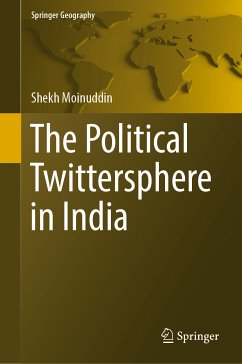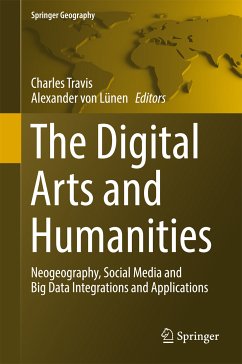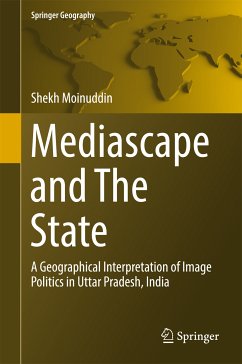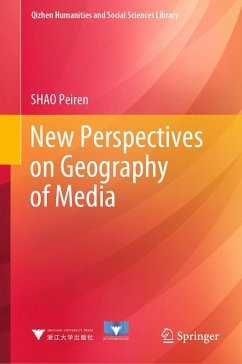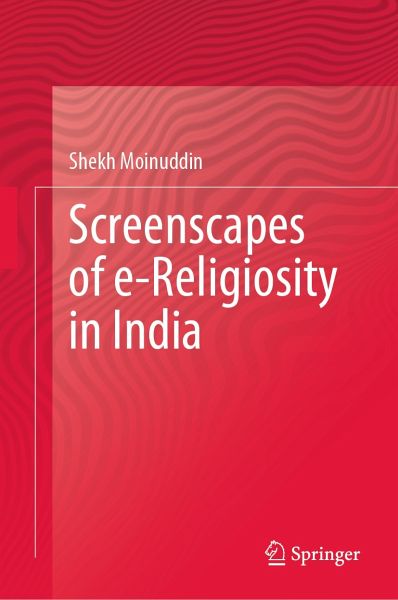
Screenscapes of e-Religiosity in India (eBook, PDF)
Versandkostenfrei!
Sofort per Download lieferbar
104,95 €
inkl. MwSt.
Weitere Ausgaben:

PAYBACK Punkte
52 °P sammeln!
This book deals with three different subjects: geography, social media and religion equally to discuss e-religiosity in terms of screenscapes that shaped digital socialization processes wherein the role of digital devices in general and smartphones in particular are considered crucial and critical. The spatial dimension is the primary foundation of the book wherein both space and place are discussed in digital manifestations in spatial sense. Religiosity is discussed variably in a sense of spirituality, social theories, religions and images. The book uses some illustrations to understand image...
This book deals with three different subjects: geography, social media and religion equally to discuss e-religiosity in terms of screenscapes that shaped digital socialization processes wherein the role of digital devices in general and smartphones in particular are considered crucial and critical. The spatial dimension is the primary foundation of the book wherein both space and place are discussed in digital manifestations in spatial sense. Religiosity is discussed variably in a sense of spirituality, social theories, religions and images. The book uses some illustrations to understand image politics. Image politics is quintessential in the age of digital technologies when production and reproduction of images are not restricted to business only; rather it attracts politics too and politicians often use the same to make political scores against opponents.
The book covers contemporary digital discourses of e-religiosity in a sense of screenscapes that often found pivot indaily discussions across social media platforms. Screenscapes are considered as mediated technologies when contents can be accessed from different social media apps to construct or deconstruct their views, narratives, discourses, ideas, emotions, and perceptions around religious images in day-to-day activities, practices, rituals, customs, traditions, faiths and beliefs. The used illustrations exclusively map Indian religious gestures, identities, values, and rituals in digital-spatial contexts.
The book discusses seven major questions and argues the same across the chapters in varied representations and interpretations: How and to what extent has the meaning of religiosity changed in the digital age? What are the dimensions of e-religiosity in India? How are digital devices (re)shaping religiosity in terms of e-religiosity? How and to what extent digital devices are negotiating with social and cultural lives? What is digital spatiality? How and to what extent does social media influence religiosity?
The book covers contemporary digital discourses of e-religiosity in a sense of screenscapes that often found pivot indaily discussions across social media platforms. Screenscapes are considered as mediated technologies when contents can be accessed from different social media apps to construct or deconstruct their views, narratives, discourses, ideas, emotions, and perceptions around religious images in day-to-day activities, practices, rituals, customs, traditions, faiths and beliefs. The used illustrations exclusively map Indian religious gestures, identities, values, and rituals in digital-spatial contexts.
The book discusses seven major questions and argues the same across the chapters in varied representations and interpretations: How and to what extent has the meaning of religiosity changed in the digital age? What are the dimensions of e-religiosity in India? How are digital devices (re)shaping religiosity in terms of e-religiosity? How and to what extent digital devices are negotiating with social and cultural lives? What is digital spatiality? How and to what extent does social media influence religiosity?
Dieser Download kann aus rechtlichen Gründen nur mit Rechnungsadresse in A, B, BG, CY, CZ, D, DK, EW, E, FIN, F, GR, HR, H, IRL, I, LT, L, LR, M, NL, PL, P, R, S, SLO, SK ausgeliefert werden.





